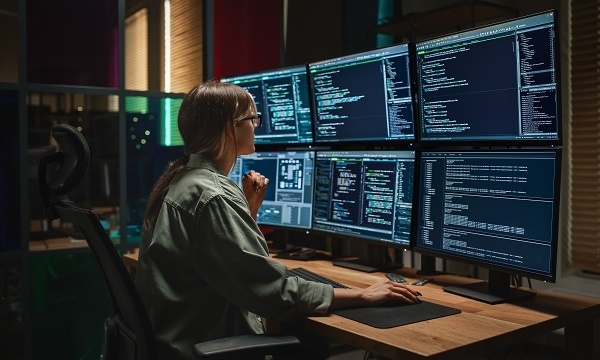Cybercriminals have shown not to discriminate with which industries they will attempt to breach, and the media and entertainment (M&E) industry is no different. As M&E businesses increasingly deliver products and services to customers digitally, the vulnerabilities they face have also increased.
Consumers are increasingly asked by the M&E industry to set up accounts and enter sensitive data on their websites and applications. This information often includes sensitive information such as banking information and birthdates. This alone increases the likelihood of an attack on M&E businesses. Additionally, online ticket sales for the industry expose the industry to more attacks that may be executed through social engineering, server attacks or malware.
Businesses in this industry must think of security from the top to bottom to avoid financial and reputational hits. Improving the industry’s cybersecurity posture will help protect created content from being pirated, while also protecting the consumers they serve.
The current state of the media and entertainment industry
When assessing the current state of the M&E industry and the dynamic amount of content created, it is important to start with security. If the security layer is compromised, the protection of assets will require a much stronger security posture.
Organizations in the M&E industry want to ensure that security is embedded throughout the organization from start to finish. From content conceptualization and creation to delivery and repository management, it’s important to understand just how complex security in the M&E industry can be in terms of technology implementation.
“Anything you possess which is valuable has to be secured, whether it is money, assets or jewelry to reduce the amount of exposure to being robbed,” says Priyadarshi A Das “PAD”, EVP at HCLTech. “There are more jobs required now in those areas because you need to have someone specialized to ensure that the content is flowing in the most secure manner.”
Many businesses within the M&E industry require protection and that number continues to grow as M&E businesses increasingly produce digital assets. Whether it is book publishers, movie distributors, television producers, game developers or newspaper publishers, the increase of online content and services increases M&E’s exposure to cyber threats.
Challenges facing the M&E industry
Security in the M&E industry is not just a “must have,” it is mandatory to ensure content delivery is secured and the user experience isn’t interrupted. Cybercriminals attacking the M&E industry are often financially motivated, like cybercrimes inflicted on other industries.
The shift from physical media distribution to more streaming services, online portals and subscription-based content means that customer’s sensitive information is more exposed than in the past.
Consumers are often asked to set up accounts with payment methods and other sensitive data that make them intriguing targets for cybercriminals. As M&E businesses increase their internet use and attack surface, cybercriminals can obtain personal data via phishing attacks, malware or ransomware attacks.
Another major challenge facing the M&E industry is the risk of third parties being breached, which can impact the industry significantly, because of its long and diverse supply chain.
The M&E industry must also maintain pace with regulations and laws impacting the industry. These changes can come from legislation or collective agreements by employees in the industry.
“There has been significant change in cybersecurity, cybercrimes and the laws and regulations which are implemented specifically to address those points,” says PAD. “In the media world, the level of punishment and retribution that you face is significantly higher than what it was in years past.”
Benefits of improving security in the M&E industry
The benefits of improving organizational security posture in the M&E industry extend beyond the protection of copyrighted material. Implementing cybersecurity practices from top to bottom helps protect consumers and employees within the industry.
“There’s a significant business opportunity that we should not take our eyes off, because then we can identify specialized functions that exist within the business organization and map them adequately with proper security,” adds PAD.
Security plays a role in HCLTech’s All Access Media Marketplace Platform which helps organizations streamline content creation and deliver a seamless user experience. Developed in coordination with Microsoft and CoreSite, the marketplace was developed to help solve the pain points faced by many media creators related to workflow development, applications and vendor discovery.
The platform enables media creators to build workflows in HCL Workflow Creator, which serves as the human-to-machine interface and provides a secure movement of digital assets from studio/set through carriers to private data centers, co-location providers, SaaS cloud-based tools and hyperscalers.
Additionally, major studios, independent production companies, ad agencies and corporate video producers will be able to securely leverage the global resources in All Access through HCLTech’s Zero Trust Security Framework.
The lack of cybersecurity practices in the M&E industry can have major financial costs, legal consequences and inflict reputational damage, but reducing the risk of cybercrime through cyber policies, procedures and best practices can benefit the industry as a whole and the consumers they serve.





